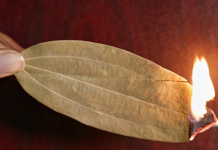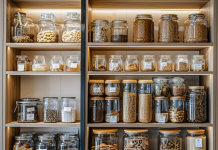Are your cherished hardwood floors starting to show signs of wear and tear? It’s essential to keep them clean and well-maintained to ensure they remain a beautiful and enduring part of your home. This article provides expert advice on cleaning techniques and offers safe solutions for dusting, deep cleaning, and stain removal.
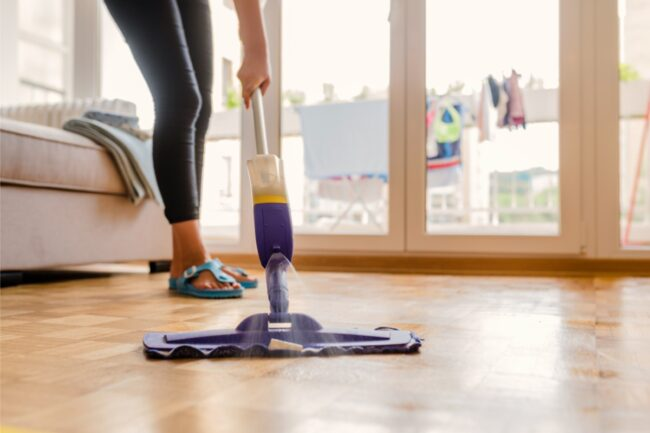
Step 1: Determine Your Floor Finish
Before you begin cleaning your hardwood floors, you must identify the type of finish they have. There are two primary types of finishes: surface finishes and penetrating finishes.
- Surface Finishes: These include polyurethane and urethane, which create a protective barrier on the wood’s surface. It’s safe to use water and water-based cleaning products on these finishes.
- Penetrating Finishes: Examples include linseed oil or tung oil, which soak into the wood and are often waxed for added shine. These finishes are sensitive to water, so you should only use solvent-based cleaning products on them.
To check your floor’s finish, gently scrape a small, hidden area with a sharp knife blade. If the scraped material is clear, your floor likely has a surface finish. If it’s stained but no clear material comes off, it probably has a penetrating finish.
Step 2: Regular Dusting and Maintenance
Prevention is key when it comes to maintaining hardwood floors. Here are some tips for keeping them dust-free:
- Weekly Cleaning: Use a dry mop, broom with synthetic tips, or a vacuum cleaner with a floor brush attachment to remove light dust, dirt, and pet hair. Be cautious with vacuum cleaners, as rotating brushes can damage wood floors.
- Microfiber Mops: Invest in a mop with a large, flat head and a microfiber cloth pad. These mops effectively capture dust and dirt without scratching the wood. Look for reusable and machine-washable pads to reduce costs and environmental impact.
Step 3: Handling Stains
Accidents happen, and stains can mar the beauty of your hardwood floors. Here’s how to tackle common stains:
- Food Stains: For food stains, gently slide a plastic knife under the stain, then scrub with a clean, slightly damp cloth. On penetrating finish floors, you may need to cut away some wax, apply hardwood floor wax, and buff for a shine.
- Oil Stains: Use trisodium phosphate (TSP) to break down oil stains. Dilute two tablespoons of TSP in a gallon of warm water, apply it to the stain with a cloth, and wipe it off with a water-soaked cloth. Dry quickly with a clean cloth.
- Wax, Gum, or Crayon Marks: Place ice cubes in a sealed freezer bag, chill until deposits become brittle, and then scrape them off with a plastic spatula. On penetrating finish floors, reapply solvent-based hardwood floor wax and buff the repair.
- Water, Ink, or Pet Stains: These can be stubborn. For penetrating finish floors, lightly sand the stain, scrub with coarse ’00’ grade steel wool dampened with mineral spirits, wipe with a damp cloth, and dry. Apply a solvent-based hardwood floor wax for a shine.
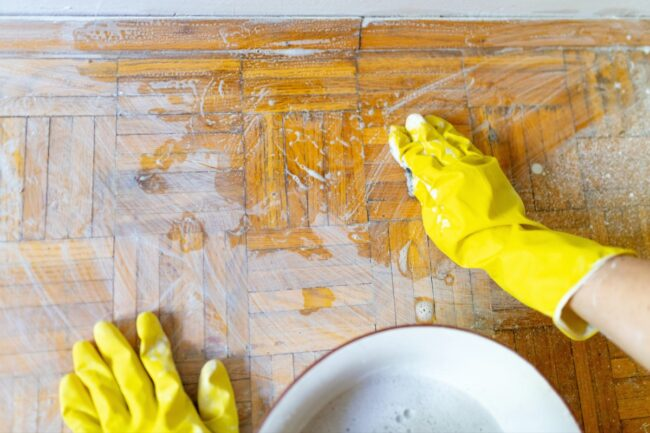
Step 4: Deep Cleaning
A periodic deep clean is essential to maintain the luster of your hardwood floors. The method you use depends on the type of finish:
- Surface Finish: If your floor appears dull after regular cleaning, use a pH-neutral, wax-free, and petroleum-free cleaner. Ensure it’s suitable for surface finishes and follow the manufacturer’s instructions.
- Penetrating Finish: Deep cleaning for these floors involves removing old wax and applying a new one. Use mineral oil, then wipe with water-dampened cloths, and dry thoroughly. Apply a solvent-based hardwood floor wax and polish in a circular motion.
Perform a deep clean about twice a year to keep your floors looking their best.
In Conclusion
Properly cleaning and maintaining your hardwood floors is crucial to preserving their natural beauty. Always consider your floor’s finish when selecting cleaning products and methods. Regular dusting and immediate stain removal can prevent damage, and periodic deep cleaning will ensure your floors shine for years to come.
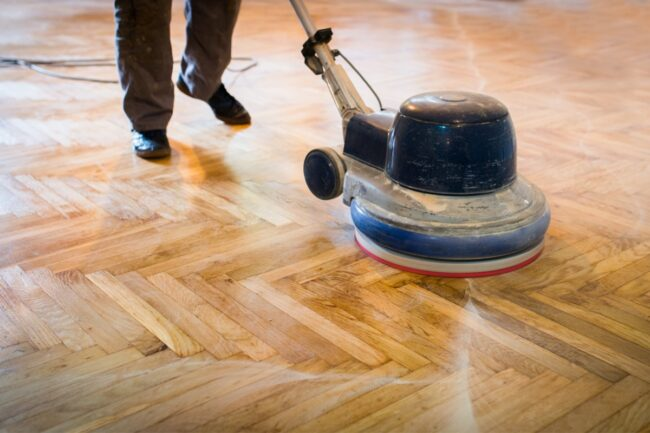
Frequently Asked Questions
- Can I use vinegar on my hardwood floors? Yes, diluted white vinegar can help clean heavily soiled hardwood floors. Mix ½ cup of white vinegar with a gallon of water.
- How do I deep clean old hardwood floors? Deep cleaning old hardwood floors is similar to cleaning new ones. Test a small area, choose a suitable method and cleaner, and take your time to address any hidden damage.
- Is Dr. Bronner’s safe for wood? Dr. Bronner’s soap is safe for wood when diluted. Simply add a few drops to water in a spray bottle for a homemade floor cleaner.
- How do I remove stubborn stains from hardwood floors? Microfiber mops work well for surface stains, but stubborn ones may require scraping, vacuuming, or light sanding, followed by appropriate cleaning and waxing.
- Why does the floor still get dirty after mopping? Floors may appear dirty after mopping due to a dirty mop head or ineffective cleaning. Rinse the mop head, replace it if necessary, and wipe a mopped area with a white cloth to check for remaining dirt.
images source : istockphoto.com



